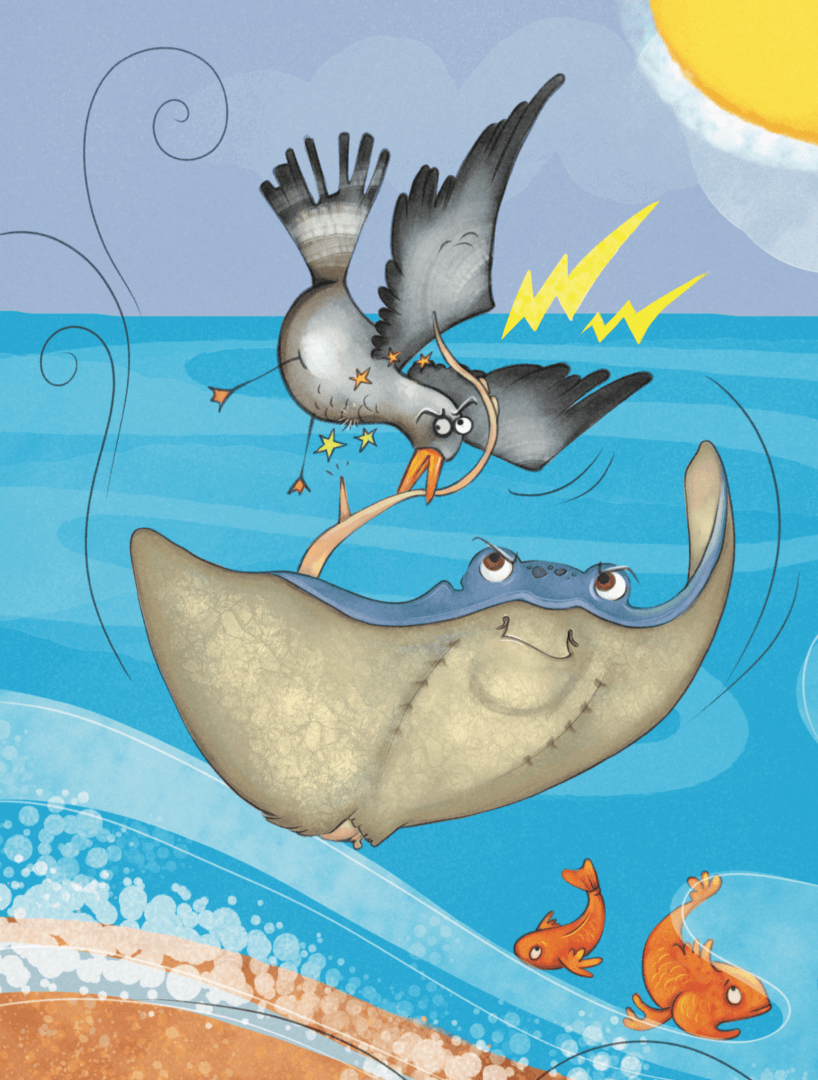Animal Surprises
Animal surprises include sudden sightings. Swim masks and binoculars can alter animal sizes and colors.
Wild animals rarely act like tame ones. While at the beach, hiking, or camping, children must learn to stay safe.
Surprises are the nature of every beast. Meat eaters have claws, teeth, barbs, horns, toxins, and/or electric shock.

Did You Know?
Stingrays cannot see what they are eating. Their eyes are on top of their body. Their mouths are underneath. They smell the difference between food and non-food items.
Mudskippers largely live out of water. These fish walk on land and climb trees or rocks to find food and resting spots. Fish living out of water are animal surprises.
Fish bark, burp, groan, grunt, hiss, hoot, moan, and make sucking noises. The Gulf Corvina can be louder than rock concert.
Greenland Sharks are not fully mature until they are over one hundred years old.
Mako and Great White Sharks heat some body parts to improve their cold-water performance.
Each Whale Shark sports a unique spot pattern, like a fingerprint.
Mantas have no stingers, venom, sharp teeth, or special defenses. The ‘horns’ are filter-feeding parts that unfold for food funneling.
One Good Day
Ray and Shark bring the ocean alive for kids.
Donate so that wildlife can live happily, too.
(2 minutes 48 seconds)
Parks & Beaches
Animal sightings draw visitors to nature areas.
Visitors encounter animals that might not be seen again. Rangers add facts about disappearing creatures.
Lifeguards know the risks of animals, tides, and currents. They post warnings and start rescue and treatment.
Animal Needs
Animals work to survive and raise their young.
Wildlife needs to stay wild. Parks post warnings and safety information about the animals sharing our world.
Safe behaviors should be explained to children. They may not value natural places after falling at risk.
Wild, Wild Night
The Goopy Ghost ignores the rules.
Animals prove this is a bad idea.
(48 seconds)
